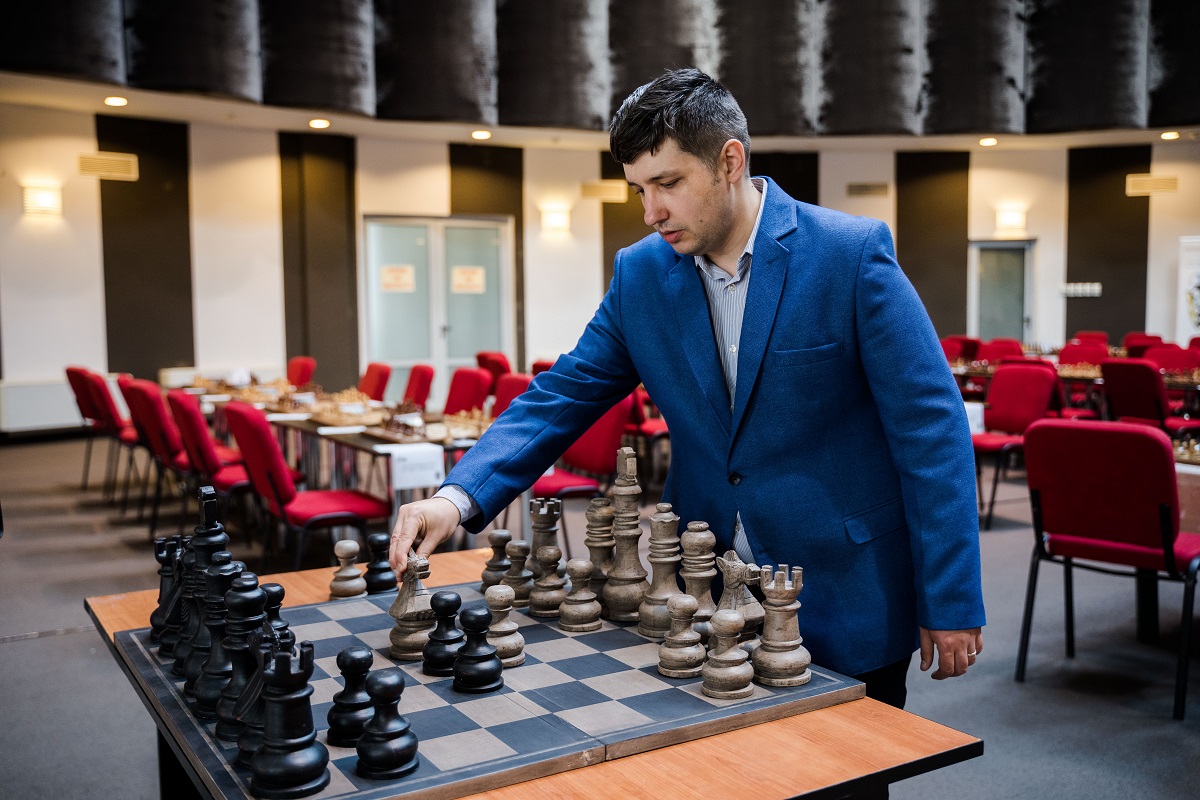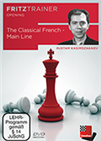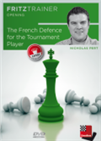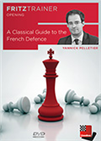MMMG #2: Trying out the French
Constantin Lupulescu was born on March 25th in Butfea, a city located 20 km north-west of Bucharest. A five-time national champion and current number one in Romania, he has represented his country in Chess Olympiads since 2004.
Lupulescu is a seasoned professional. He crossed the 2600 rating barrier in July 2010 and never looked back, qualifying to five World Cups between 2009 and 2019. His most recent major success was winning the 2019 Reykjavik Open ahead of strong opposition, including the likes of Gawain Jones, Nils Grandelius or Alireza Firouzja.
In 2014, at the eleven-round European Championship in Yerevan, Lupulescu had 6 points after nine rounds, which meant he badly needed a win if he wanted to get a spot in next year's World Cup. He was paired up against a higher-rated player with black, and decided to try out a new opening!

Lupulescu won the 2019 SuperChess Blitz Cup in Bucharest | Photo: Official site
Below we present the highlights of the annotations sent by the author. The full analysis can be found in a replayable board at the end of the article. Note that Constantin also sent a follow-up game, which can be found in the raplayable board as well.
The European Championships are probably the most successful tournaments in my career. I scored four medals in my junior years — two in individual events and two in team events. When I started playing in the open section, this rule seemed to apply as well, as I managed to qualify five times to the World Cup. This tournament, played in Yerevan in 2014, was also going well until, in the eighth round, Alexander Moiseenko defeated me in nice style. In the following round, I managed to scrape a much-needed win, and then went on to face one of the top seeds with black in the penultimate round.
Kryvoruchko, Yuriy vs. Lupulescu, Constantin
European Championship, 2014 (Yerevan, Armenia)
1.e4 e6
Before the European Championship, I had a nice training camp with the Romanian team. After cheerfully looking at some games from the black side, I finally decided to give the French Defense a go. I thought that playing it for the first time against a strong theoretician would be an interesting (and rather optimistic) trial by fire.
2.d4 d5 3.Nc3 Nf6 4.e5 Nfd7 5.f4 c5 6.Nf3 Nc6 7.Be3 cxd4 8.Nxd4 Bc5 9.Qd2 0-0 10.0-0-0 a6 11.Nb3
 After 1.e4 e6 2.d4 d5 3. Nc3 Nf6 4. e5 Nfd7 5. f4 c5 6. Nf3 Nc6 7. Be3, the author takes a detailed look at a daring line with 7... cxd4 8. Nd4 Qb6, as well as the quieter plans with 7...cxd4 8. Nd4 Bc5, and the main line with 7... a6 and b5.
After 1.e4 e6 2.d4 d5 3. Nc3 Nf6 4. e5 Nfd7 5. f4 c5 6. Nf3 Nc6 7. Be3, the author takes a detailed look at a daring line with 7... cxd4 8. Nd4 Qb6, as well as the quieter plans with 7...cxd4 8. Nd4 Bc5, and the main line with 7... a6 and b5.
Not surprisingly, my opponent chooses the most principled line. Three times I faced Yuriy Kryvoruchko with black, three times I chose the French, and three time I was struggling after the opening.
11...Bb4 12.g4 b5?! Natural, but my attack will be slower.
13.Rg1!?
The start of a very interesting maneuver — it turns out I don't have many defenders around my king.
13...Bb7 14.Rg3 Qe7 15.Rh3 Rfc8 16.Bd3?! Very natural, but not the best.
16...g6 17.Bg1 Bxc3?
Although tempting, this was a poor strategical decision, surrendering control of the dark squares. I manage to shatter his pawn structure, but my counterplay comes too late.
18.bxc3 a5 19.Kb1 b4
I thought I would be fine, but I underestimated the following idea.
20.f5! Qf8 21.Qg5!
Around here, I realized that maybe playing the Caro-Kann would have been a decent choice after all...
21...Ncxe5 22.Bd4
 This French Defence DVD is a complete attacking opening repertoire for black after 1.e4 e6. GM Nick Pert has played the French defence his whole life and provides all his la test and most up to date analysis crammed into 1 DVD.
This French Defence DVD is a complete attacking opening repertoire for black after 1.e4 e6. GM Nick Pert has played the French defence his whole life and provides all his la test and most up to date analysis crammed into 1 DVD.
After this dark-squared monster lands on his favorite French square, there is no way my king will survive for long.
22...Qg7! 23.cxb4 Also strong, but it allows me to muddy the waters a little.
23...f6!
24.Qe3 exf5 25.gxf5 axb4 26.fxg6 hxg6 27.Rg1
My kingside is in dire straits. Naturally, White starts pointing all he has in the direction of the black king.
27...Re8 28.Rhg3 Nf8 29.h4!
Another strong move, and it looks like White has done everything right so far. However, this came at the cost of most of his time on the clock.
29...Ba6 30.Bxa6? A rushed decision that he will soon live to regret.
30...Rxa6
Once the light-squared bishops were exchanged, I can start breathing again.
31.h5 Rae6 32.Nc5 R6e7 Black managed to bring all his pieces into play, and White's advantage has become quite problematic.
33.hxg6?
A really bad call that can only be explained by our mutual time trouble — now White's rooks look quite silly. However, there is no good advice in time trouble, and I've certainly done more terrible things in some of my own.
33...Nc4 Suddenly Black's counterattack proves to be very dangerous.
34.Qc1 A sad necessity due to the back rank problems.
34...Na3+ 35.Kb2?!
Rxa3 was needed. Although looking unpleasant, White would still be in the game.
35...Re2 36.Qf4 White finds the only move to stay in the game.
36...Nxc2 37.Bxf6
With his seconds ticking away, White makes a tempting move that seals his fate.
37...Qa7! -+ A very sweet queen move. Now the white king is beyond salvation.
38.Kb1 Na3+
 This DVD gives you the key to start out with the French Defence. GM Yannick Pelletier is a specialist of this opening, and believes that the most efficient way to understand its ideas, plans, and typical structures is to study classical lines.
This DVD gives you the key to start out with the French Defence. GM Yannick Pelletier is a specialist of this opening, and believes that the most efficient way to understand its ideas, plans, and typical structures is to study classical lines.
In time trouble it's usually preferable to choose the most forcing option.
39.Ka1 Re1+ 40.Kb2 Nc4+
The time trouble is over, and so is the game. With this I reached a 7/10 score, getting much closer to World Cup qualification.
After my rollercoaster game from round ten, I was paired up against a higher-rated opponent (Viktor Laznicka) with black, again. I repeated the French — the opening result from the game with Kryvoruchko was no peach, but what better time to push your luck than the last round? (See full game in the replayer below)
Full annotations
Links
























